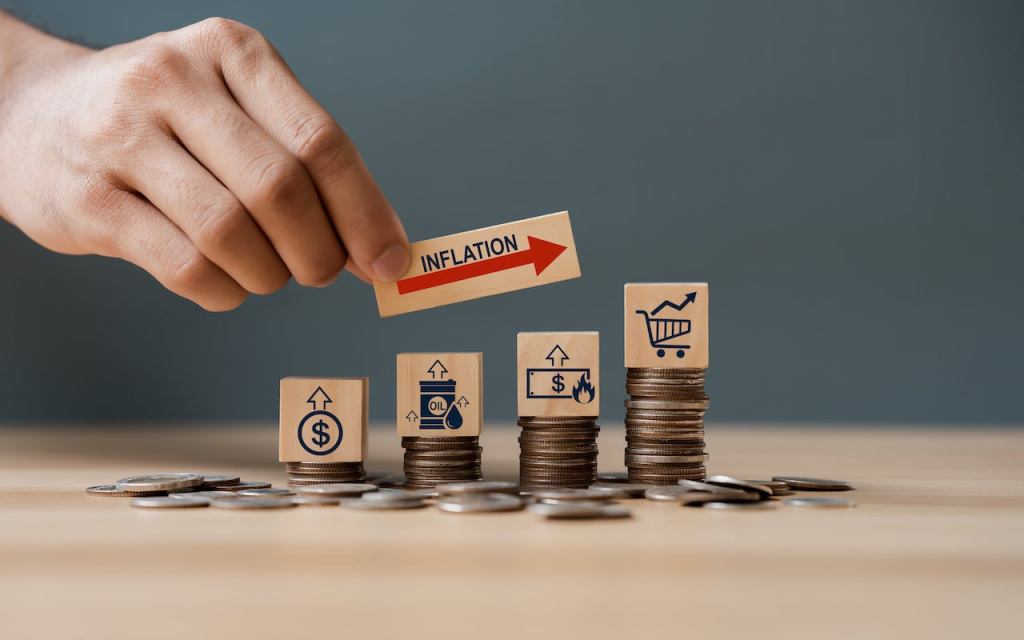April’s Consumer Price Index data is welcome news to the Federal Reserve, which is debating whether to continue hiking interest rates after its most recent 25 basis point hike last week. Especially encouraging is that housing inflation pressure in the CPI is starting to ease, with April representing the smallest one month change in over two years.
Overall, consumer prices cooled further in April, with the CPI rising 4.9% year over year, before seasonal adjustment, according to data released Wednesday by the Bureau of Labor Statistics (BLS).
This is the smallest 12 month increase since the year ending April 2021 and the 10th consecutive month of declines. Indexes that contributed to the annual increase were food (+7.7%), motor vehicle insurance (+15.5%), household furnishings and operations (+5.3%), recreation (+5.0%), and new vehicles (+5.4%). Shelter also posted a significant increase, rising 8.1% year over year and accounting for over 60% of the total increase in the all items less food and energy index which was up 5.5% compared to April 2022.
Like in March, the energy index posted a significant decrease, and was down 5.1% compared to a year prior.
“CPI data show that inflation is down significantly from the 9.1% level reported last summer, but inflation is still running far above the Fed’s target rate of 2%,” Lisa Sturtevant, Bright MLS’ chief economist, said in a statement. “The lackluster inflation report comes as the Fed has raised interest rates 10 times in an attempt to slow the economy and cool price growth. There has been a lot of speculation about why we aren’t seeing inflation come down faster. Maybe the conventional models explaining the relationship between interest rates and inflation simply don’t work in this unusual, post-pandemic economy. Maybe holding firm on a 2% target—a threshold that has a pretty arbitrary origin story—doesn’t make sense in today’s economy.”
Despite the annual dip, the CPI rose on a month-over-month basis, posting a 0.4% monthly increase in April, compared to a 0.1% monthly increase in March. Major contributors to this increase included used cards and trucks (4.4%), motor vehicle insurance (1.4%), and energy (+0.6%, thanks to a +3.0% jump in the gasoline index).
Shelter was again a major contributor to this increase, rising 0.4% month over month, thanks to a 0.6% increase in the rent index and a 0.5% jump in the owners equivalent rent index. This increase, however, is slightly better than the 0.6% monthly increase recorded in March. The data also suggests that the economy is close to peak rent inflation—lower monthly rent prices have been recorded for two consecutive months, and the price growth for new leases is still decelerating.
Indexes that declined month over month in April included airline fare (-2.6%) and new vehicles (-0.2%). The food index remained unchanged on a monthly basis.
Despite inflation remaining at levels higher than the Fed would like, economists believe the Fed should at least pause its rate hikes.
“Pausing would also allow housing costs a chance to catch up. Housing plays an outsized role in the CPI, accounting for between 30 and 40% of the inflation measure each month. But shelter costs—including both rents and owner’s equivalent rents—can track several months behind other prices. We know home price growth and rent growth have been decelerating, and prices and rents have even been falling in some markets,” Sturtevant said. “Looking back at historic data, the shelter component of the CPI definitely tracks behind trends in the overall inflation metric. For example, in the inflation run-up in the late 1970s, the rate inflation peaked in March of 1980. However, the CPI’s shelter component did not begin to fall until July of that year.”
Lawrence Yun, the National Association of Realtors’ chief economist, took a stronger stance during the “Residential Economic Issues and Trends Forum” at NAR’s ongoing Legislative Meeting.
According to Yun, the Fed’s rate hikes have hurt regional banks and the housing market.
“Inflation will not reignite – inflation will come down closer to 3% by the year’s end,” Yun stated. “Inflation has calmed down while rents are still accelerating. Rent growth will decrease because apartment construction – entry units coming on the market – is already in the pipeline. We are already moving in the right direction towards consumer price inflation.”
Yun also noted that he is forecasting mortgage rates to fall closer to 6.0% in 2023 before dropping below 6.0% in 2024. He also anticipates new and existing home sales to bottom out in 2023 before rising again in 2024.
In reflection of the current spring housing market, Sturtevant shares a similar view.
“The spring housing market has been slower as higher interest rates have eroded buyers’ purchasing power and both buyers and sellers are watching an economy that is growing more uncertain,” she said. “The Fed’s rate hikes may, indeed, be having the intended impact but we might just need to pause, take a breath and let the effects move through the economy.”






